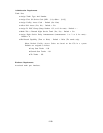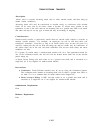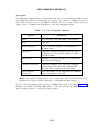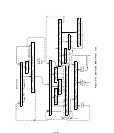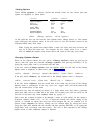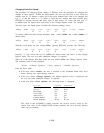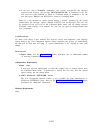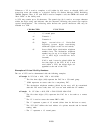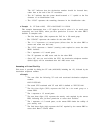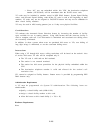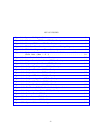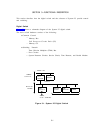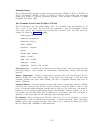
Whenever a VF is used to complete a call (either by dial access or through ARS), call
processing treats the number as a physical facility for Station Message Detail Recording
(SMDR) purposes. Thus, if VF code #190 is used to complete a call, the SMDR call record will
show “#190” as the facility used.
A VFN may contain up to 28 characters.
The pound sign (#) is used as an escape character
within the digit string and indicates that the character following the pound sign requires
special interpretation. The following table defines the special characters that may be
included in a VFN.
CHARACTER FUNCTION
1.5 second pause
*
#*
Transmit *
##
Transmit #
#3
Begin transmission of
End-to-End
Signaling (system begins transmitting
touch-tone signals to the far end switch).
#5
Insert dialed digits (destination telephone
number) here. The destination telephone
number may be up to 16 digits in length
(21 if ARS digit translations have
occurred).
If #5 is used, it must be placed within the
last nine digits of the VFN. If #5 is not
used within a VFN, the dialed digits are
appended to the end of the VFN.
Examples of Virtual Facility Numbers
The use of VFS can be demonstrated with the following examples:
● Example 1: VF Code = #191, VFN = 100 10288
—
The first three digits (100)
—
10288 represents an access
—
The destination telephone
after this IXC access code,
represent the FAC for a CO trunk group.
code for a non-primary IXC.
number (dialed by the user) will be transmitted
since “#5” was not used within the VF number.
● Example 2:
VF Code = #193, VFN = 2219* 5554343 *#5#*12345
—
The first three digits (221) represent the FAC for a tie trunk to a remote
PBX.
—
The “9” is used to access the remote PBX’s ARS.
.
The “*” represents a pause of 1.5 seconds (allows time for dial tone to occur).
—
The “555 4343” defines the local address of a private network and its internal
routing table.
—
The “*” represents a 1.5 second pause.
2-259



